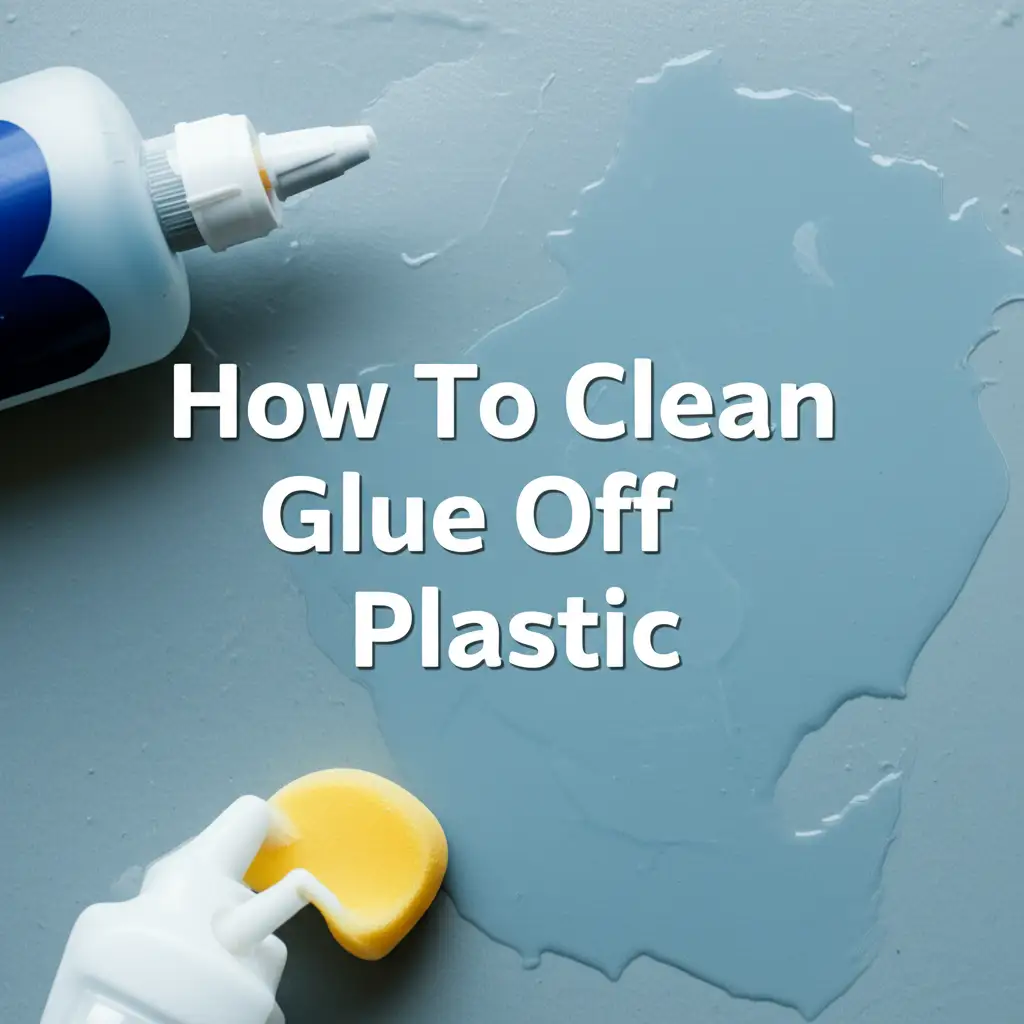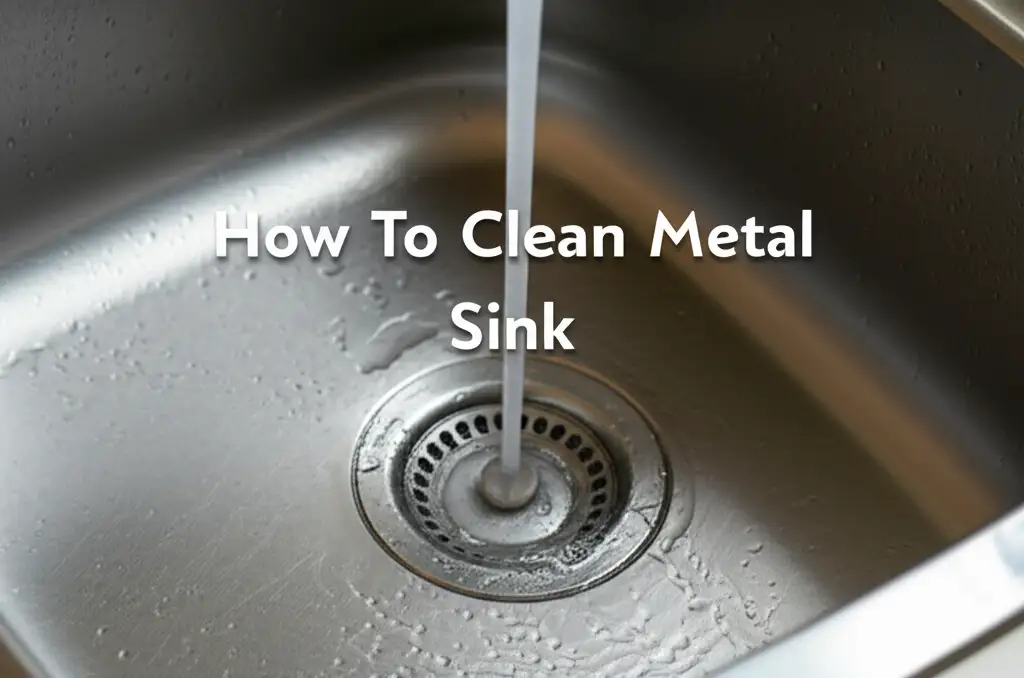· Home Cleaning · 15 min read
How To Clean Polished Nickel

How to Clean Polished Nickel for a Lasting Shine
Do you love the reflective shine of polished nickel fixtures? I certainly do! They add a touch of elegance to any home. However, maintaining that brilliant luster can feel like a challenge. Polished nickel, like many metals, can lose its shine over time, gathering fingerprints, smudges, and even tarnish.
But do not worry. Learning how to clean polished nickel properly is straightforward. You do not need harsh chemicals or special tools. This guide covers everything. We will discuss understanding polished nickel, gather essential supplies, and follow simple steps for daily care and deep cleaning. I will also share natural remedies for stubborn tarnish. We will finish by exploring ways to keep your polished nickel gleaming for years to come. Let’s make your fixtures sparkle again!
Takeaway
- Use soft cloths and mild, pH-neutral soap for regular cleaning.
- Avoid abrasive cleaners, harsh chemicals, and scrubbing pads.
- Natural remedies like vinegar or baking soda can remove light tarnish.
- Always dry polished nickel completely after cleaning to prevent water spots.
- Maintain the shine with regular dusting and protective waxes.
Polished nickel requires gentle care. Clean it with a soft cloth, warm water, and a small amount of mild dish soap. Wipe the surface gently to remove dirt and fingerprints. For light tarnish, a solution of water and white vinegar works well. Always dry the surface thoroughly immediately after cleaning to prevent spots and maintain its shine.
Understanding Polished Nickel
Polished nickel is a beautiful metal finish. It has a bright, mirror-like appearance. Manufacturers create it by applying a nickel plating over another metal, like brass or steel. Then, they polish the surface to a high shine. This finish is popular in kitchens and bathrooms. You find it on faucets, cabinet hardware, and lighting fixtures. Its reflective quality adds a classic look to any space.
However, polished nickel can show fingerprints easily. It can also tarnish over time. Tarnish is a thin layer of corrosion that forms on the surface of the metal. It makes the surface look dull or discolored. Humidity, air pollutants, and oils from skin cause tarnish. Understanding this helps you care for your polished nickel items. Proper cleaning helps prevent tarnish buildup. It also keeps your items looking new.
Essential Supplies for Polished Nickel Cleaning
Before you start cleaning, gather the right tools. Using the correct supplies is crucial for polished nickel. Wrong tools can scratch or damage the finish. Your goal is to clean gently. You want to restore shine without harming the surface. I always make sure I have these items ready.
Here are the basic supplies you will need:
- Soft Microfiber Cloths: These cloths are gentle on surfaces. They will not scratch the polished finish. Have several on hand for cleaning and drying.
- Warm Water: Tap water is fine. Warm water helps dissolve dirt and soap more effectively.
- Mild Dish Soap (pH-neutral): Look for a gentle, non-abrasive dish soap. Harsh detergents can strip the finish or leave residue. A small amount goes a long way.
- White Vinegar: This is a natural, mild acid. It is excellent for tackling water spots and light tarnish. You can learn more about using vinegar to clean various surfaces, even in a shower, by visiting BeaCleaner. You might find it helpful for specific cleaning challenges like how to clean shower with vinegar.
- Baking Soda: This is a mild abrasive. It works well for making a paste to remove stubborn tarnish.
- Cotton Swabs or Soft Brush: These are useful for cleaning intricate details or tight spots.
- Protective Wax (Optional): A good quality car wax or specialty metal wax can add a protective layer. This layer helps prevent future tarnish and makes cleaning easier.
Always avoid abrasive sponges, steel wool, or harsh chemical cleaners. These materials can permanently damage the delicate polished nickel surface. Stick to soft materials and gentle solutions. This approach ensures your fixtures stay beautiful.
Step-by-Step Gentle Cleaning for Polished Nickel
Regular, gentle cleaning keeps your polished nickel looking its best. This routine helps prevent dirt and tarnish from building up. I find that consistent care makes a big difference. You do not need to deep clean every day. A quick wipe-down often suffices.
Follow these simple steps for routine care:
Daily Dusting and Wiping
For everyday maintenance, a quick wipe is all you need.
- Dust Regularly: Use a dry, soft microfiber cloth to wipe down polished nickel surfaces daily or every few days. This removes dust and prevents it from settling into the finish.
- Fingerprint Removal: Polished nickel easily shows fingerprints. Use a clean, dry microfiber cloth to buff them away. A gentle rub is usually enough.
Weekly Wipe-Down
For a slightly deeper clean, do this weekly:
- Prepare a Solution: Fill a spray bottle or small bowl with warm water. Add one or two drops of mild, pH-neutral dish soap. Mix it gently.
- Dampen Cloth: Dip a soft microfiber cloth into the soapy water. Wring out excess liquid. The cloth should be damp, not dripping wet.
- Wipe the Surface: Gently wipe down all polished nickel surfaces. Pay attention to areas with more grime or smudges.
- Rinse (Optional but Recommended): Dampen a separate clean microfiber cloth with plain warm water. Wipe the surfaces again to remove any soap residue. This prevents streaks.
- Dry Thoroughly: This is the most important step. Immediately use a dry, clean microfiber cloth to dry the entire surface. Buff gently until no moisture remains and the surface shines. Water spots can form if you let it air dry.
This gentle cleaning routine protects your polished nickel. It keeps it free from everyday grime. Consistent care means less work later on.
Tackling Tarnish: Natural Solutions for Polished Nickel
Even with regular cleaning, polished nickel can sometimes develop tarnish. This dullness or discoloration happens over time. Do not worry. You do not need strong chemicals. Natural household items can effectively remove tarnish. I often turn to these methods first. They are safe and work very well.
Here are some natural solutions for tarnish removal:
Vinegar and Water Solution
Vinegar is a mild acid. It helps break down tarnish. This method is great for light to moderate tarnish.
- Mix the Solution: Combine equal parts white vinegar and warm water in a spray bottle or bowl. For example, use ½ cup of vinegar and ½ cup of water. You can also explore how to clean other nickel surfaces, like how to clean brushed nickel faucets, with similar gentle methods.
- Apply to Surface: Dampen a soft microfiber cloth with the vinegar solution. Alternatively, spray the solution directly onto the tarnished polished nickel.
- Let it Sit (Briefly): Let the solution sit on the tarnish for 1-2 minutes. For heavier tarnish, you might let it sit for up to 5 minutes. Do not let it dry on the surface.
- Gently Wipe: Use the damp cloth to gently rub the tarnished areas. The tarnish should begin to lift away. For intricate areas, use a cotton swab.
- Rinse Thoroughly: Dampen a clean cloth with plain water and wipe the surface to remove all vinegar residue.
- Dry Immediately: Buff dry with a separate, clean, dry microfiber cloth. Ensure no moisture remains.
Baking Soda Paste
Baking soda is a gentle abrasive. It helps scrub away tarnish without scratching. This method is effective for more stubborn tarnish.
- Make a Paste: Mix 2-3 tablespoons of baking soda with just enough water to form a thick paste. The consistency should be like toothpaste.
- Apply the Paste: Apply the paste directly onto the tarnished areas of the polished nickel. You can use your fingers or a soft cloth.
- Gently Rub: Use a soft cloth or your fingers to gently rub the paste onto the tarnish. Use small, circular motions. Do not scrub hard. You want to lift the tarnish, not scratch the finish.
- Let it Sit: Let the paste sit on the tarnish for about 5-10 minutes. This allows the baking soda to work on the discoloration.
- Rinse Well: Use a clean, damp cloth to thoroughly rinse off all the baking soda paste. Ensure no residue remains in crevices.
- Dry Completely: Immediately dry and buff the polished nickel with a clean, dry microfiber cloth.
Always test these solutions on a small, hidden area first. This ensures they do not harm the finish. These natural methods are often sufficient. They help restore the shine to your polished nickel fixtures.
Dealing with Stubborn Stains and Scratches
Sometimes polished nickel faces more than just tarnish. Stubborn stains, mineral deposits, or even minor scratches can appear. While it is best to prevent these issues, addressing them properly can restore your fixture’s beauty. I understand the frustration of seeing these marks.
Here is how to tackle more challenging problems:
Removing Mineral Deposits and Hard Water Stains
Hard water contains minerals. These minerals leave white, crusty deposits. These deposits are common on polished nickel faucets.
- Vinegar Soak (for small items): For removable items like faucet aerators, soak them in undiluted white vinegar for 30 minutes to an hour. The acid helps dissolve the minerals.
- Vinegar Compress (for fixed items): For fixed fixtures, soak a cloth in white vinegar. Wrap the cloth around the stained area. Secure it with plastic wrap or a rubber band. Let it sit for 30 minutes to a few hours.
- Gentle Scrub: After soaking, gently scrub the area with a soft brush or a non-abrasive sponge. The deposits should loosen easily.
- Rinse and Dry: Rinse thoroughly with clean water. Then, dry the surface completely with a clean microfiber cloth.
Addressing Stubborn Discoloration
If the tarnish is very deep or you have specific stains, natural methods might not be enough.
- Lemon Juice and Salt Paste: Mix fresh lemon juice with enough table salt to create a thick paste. Apply the paste to the discolored area. Let it sit for 5-10 minutes. Gently rub with a soft cloth. Rinse well and dry completely. Lemon juice is a stronger acid than vinegar. Test it in an inconspicuous spot first.
- Commercial Metal Polish (Specific for Nickel): If natural remedies fail, consider a commercial metal polish. Ensure the product states it is safe for polished nickel. Read the instructions carefully. Apply a small amount with a soft cloth. Buff gently until the stain lifts. Immediately buff off any residue with a clean, dry cloth. Always choose a non-abrasive formula. Avoid polishes meant for brass or copper, as they might be too harsh.
Minor Scratches
Polished nickel can show minor scratches. It is a soft finish.
- Gentle Buffing: For very fine surface scratches, sometimes gentle buffing with a dry microfiber cloth can lessen their appearance.
- Automotive Scratch Remover (Use with Caution): For slightly deeper but still minor scratches, some people use fine-grade automotive scratch remover. Apply a tiny amount to a soft cloth. Gently rub the scratch in the direction of the grain (if visible) or in small circles. This is a last resort. Always test on a hidden area first. This method is for very minor surface imperfections. Deep scratches often require professional re-plating.
Always remember that preventing these issues is easier than fixing them. Gentle, consistent care is your best defense against stubborn stains and scratches on polished nickel.
Maintaining the Shine: Prevention and Protection
Keeping polished nickel looking brilliant means more than just cleaning. It involves a proactive approach. Prevention is key to maintaining its lustrous shine. By taking a few extra steps, you can significantly reduce how often you need to deep clean. I always emphasize ongoing care.
Here are effective strategies for maintaining the shine and protecting your polished nickel:
- Regular Drying: This is the simplest and most effective prevention method. After every use, especially in bathrooms or kitchens, wipe polished nickel fixtures dry. Water spots and mineral deposits form when water evaporates on the surface. A quick wipe with a soft cloth prevents this.
- Handle with Care: Oils from your hands can leave fingerprints and contribute to tarnish. Try to handle polished nickel items by areas that are less visible or touched. If you must touch them, wipe them down afterward.
- Ventilation in Humid Areas: In bathrooms, proper ventilation helps reduce humidity. High humidity accelerates tarnishing. Use exhaust fans during and after showers. This keeps the air dry around your fixtures.
- Apply a Protective Wax: A thin layer of protective wax can create a barrier on the polished nickel surface. This barrier helps repel water, fingerprints, and slows down the tarnishing process.
- Choose the Right Wax: Use a high-quality car wax (carnauba wax is good) or a specialty metal polish designed for polished finishes. Ensure it is non-abrasive.
- Application: After thoroughly cleaning and drying your polished nickel, apply a very thin, even coat of wax using a soft applicator pad or cloth.
- Buffing: Let the wax dry to a haze (check product instructions). Then, buff it off gently with a clean, dry microfiber cloth until the surface shines.
- Frequency: Reapply wax every few months or as needed. This depends on how much the item is used and its environment.
- Avoid Contact with Harsh Chemicals: Bleach, ammonia, and abrasive cleaners are enemies of polished nickel. They can strip the finish or cause permanent damage. Keep these away from your fixtures. Even certain cleaning sprays for countertops can harm the finish if oversprayed. When cleaning nearby surfaces, cover your polished nickel items.
- Dust Regularly: A build-up of dust can trap moisture and pollutants against the surface. Regular dusting with a dry microfiber cloth helps prevent this.
By integrating these preventive measures into your routine, you extend the life of your polished nickel’s shine. You will find yourself spending less time on intensive cleaning and more time enjoying its beauty.
What Not to Use: Harmful Products to Avoid on Polished Nickel
Knowing what to use for cleaning polished nickel is important. Knowing what not to use is equally vital. Using the wrong products can cause irreversible damage. This damage includes scratching the surface, dulling the finish, or causing discoloration. I have seen many instances where good intentions led to ruined fixtures.
Here are the products and materials you must always avoid when cleaning polished nickel:
- Abrasive Cleaners: These are a definite no-go.
- Scouring Powders: Products like Comet or Bar Keepers Friend contain abrasive particles. These will scratch the polished surface instantly.
- Cream Cleansers with Grit: Even some “soft scrub” cream cleansers have fine abrasives. Check labels carefully.
- Steel Wool, Scouring Pads, or Brushes with Stiff Bristles: These materials are too harsh. They will leave permanent scratch marks on the delicate nickel finish. Always stick to soft microfiber cloths or cotton.
- Harsh Chemical Cleaners: Many common household cleaners are too strong for polished nickel.
- Ammonia-Based Cleaners: Glass cleaners often contain ammonia. Ammonia can react with nickel and cause discoloration or damage the protective lacquer.
- Bleach: Bleach is corrosive. It can stain, pit, or strip the finish from polished nickel.
- Acidic Cleaners (Strong Ones): While mild vinegar is okay for tarnish, stronger acids like toilet bowl cleaners or rust removers will damage polished nickel.
- Abrasive Polishes (for other metals): Polishes formulated for brass or copper often contain stronger abrasives or chemicals. These are not suitable for polished nickel.
- Solvents and Petroleum-Based Products:
- Paint Thinner, Acetone (Nail Polish Remover), Mineral Spirits: These harsh solvents can strip protective coatings or damage the polished finish.
- Rubbing Alcohol (Isopropyl Alcohol): While sometimes used for quick sanitizing, regular use or strong concentrations can be drying or damaging to the finish over time. Use sparingly if at all, and always test first.
- Wipes with Abrasives or Harsh Chemicals: Be careful with pre-moistened cleaning wipes. Some contain ingredients that are too harsh for polished nickel. Always read the label.
Always opt for the gentlest method first. If you are unsure about a product, test it on a small, hidden area. This caution helps preserve the beauty of your polished nickel for many years.
FAQ Section
How often should I clean polished nickel?
For general maintenance, wipe polished nickel fixtures dry after each use to prevent water spots. A gentle cleaning with mild soap and water once a week or every two weeks is usually sufficient. Deeper cleaning for tarnish removal might only be needed every few months, depending on humidity and usage.
Can I use commercial cleaners on polished nickel?
Most commercial cleaners are too harsh for polished nickel. Many contain abrasive agents or strong chemicals like ammonia or bleach. These can scratch or discolor the finish. It is best to stick with mild dish soap and water, or natural solutions like vinegar and baking soda. If you must use a commercial product, ensure it is specifically labeled as safe for polished nickel.
What causes polished nickel to tarnish?
Polished nickel tarnishes due to oxidation. Exposure to air, moisture, humidity, and pollutants in the environment causes this reaction. Fingerprints and oils from your hands can also accelerate tarnish formation. Proper ventilation and regular drying help minimize tarnish buildup.
Is polished nickel durable?
Polished nickel is durable against everyday use, but its finish can be delicate. It is susceptible to scratches from abrasive materials. It can also tarnish if not properly maintained. With gentle care and regular cleaning, polished nickel fixtures can last for many years, retaining their beautiful shine.
How do I prevent scratches on polished nickel?
Prevent scratches by always using soft microfiber cloths for cleaning and drying. Avoid any abrasive sponges, scrubbers, or brushes. Also, ensure you wipe gently rather than scrubbing hard. Dusting regularly prevents abrasive particles from scratching the surface when you clean.
Conclusion
Polished nickel fixtures bring a sophisticated gleam to any home. Maintaining their brilliant shine is easier than you might think. By understanding the nature of this beautiful finish and applying gentle, consistent care, you can keep your polished nickel looking new for years. Remember, the key is always to be gentle. Use soft cloths, mild soap, and warm water for routine cleaning.
For stubborn tarnish, natural remedies like a simple vinegar and water solution or a baking soda paste work wonders. Always dry your polished nickel thoroughly after cleaning. This simple step prevents water spots and helps maintain its luster. By avoiding harsh chemicals and abrasive materials, you protect the delicate finish. Your commitment to gentle care ensures your polished nickel elements continue to sparkle. Visit BeaCleaner.com for more tips on keeping your home clean and shiny.
- polished nickel cleaning
- nickel care
- remove tarnish
- metal shine
- home cleaning tips
- DIY cleaning solutions
- polished nickel maintenance




